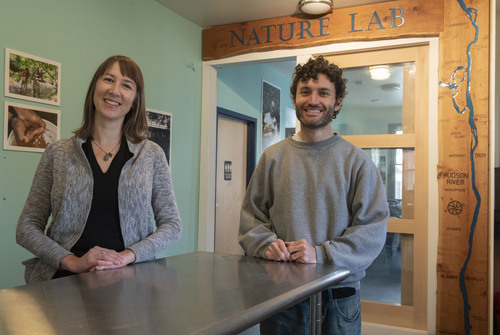Albany Times Union 12-24-21 “RPI professor gathers citizen scientist to test Troy’s soil”

Sociologist Abby Kinchy was fairly certain there was lead in the soils around Troy. Lead occurs naturally in soils, but there is more in urban areas where there has been industrial activity, or where old houses with leaded paint have been knocked down. And even though leaded gas is no longer sold in the United States, the particulate dropped from passing vehicles remains in the soil next to the road. There is no safe exposure to lead, according to the World Health Organization.
When Kinchy, a professor at the Rensselaer Polytechnic Institute, set out to prove there was indeed lead in Troy’s soil, she didn’t call on scientists. Instead, she asked the people who live in North Central Troy to join the study as citizen scientists. Her goal was not only to test the soil, but to empower regular people.
The project was made possible through a three-year, $500,000 grant from the National Science Foundation that involved not only Troy but Arica, Chile, where the soil has been contaminated by waste from the mining industry.
Kinchy and her colleagues adapted a simple test using a strip of paper used to determine low, medium or high levels of lead. They also tested for arsenic. Kinchy posted fliers throughout North Central Troy looking for “soil justice fellows,” who were paid a small stipend. She ended up 11 fellows, many of them mothers who lived in the area, or had connections to it. The Sanctuary for Independent Media stepped in as a partner and provided a venue — Nature Lab, an abandoned building on Sixth Avenue the staff and volunteers converted into a resource for the community.
Azuré Kauikeolani Iversen-Keahi was one of the moms who joined the study. She’s a Lansingburg resident, a volunteer at the Sanctuary’s outdoor learning space and an avid gardener. Her children, 3 and 5, have elevated lead levels in their blood, Iversen-Keahi said.
“It was a powerful experience and I was grateful to be connected to a opportunity to have access to a process I never thought I’d have,” Iversen-Keahi said. “I’m an indigenous person and I was comforted by working with quite a few women of color. It felt good to share space with other mothers of color and have this opportunity. We know systems in our society need repair and to have these tools available to us gives us a chance to protect ourselves and our children.”
Iversen-Keahi didn’t find lead or arsenic on her property, and no lead was detected in soil samples from public spaces and playgrounds, but lead was detected in five samples from five yards and gardens in high or very high levels. Kinchy recommended relocated gardens, covering bare soil with mulch (available free to Troy residents) and planting grass or other ground-cover plants.
Lead was not present at a detectable level in the other 20 samples. The results found at the Nature Lab were confirmed in a lab. Arsenic was detected in one sample from one garden; The test indicated a “medium” arsenic concentration.
Kinchy explained the danger from lead in soil comes from dust, making it extra-important to thoroughly wash vegetables. She said the nature of lead makes it unlikely plants will draw it out of soil and into the fruits, but the soil pH also influences how much lead might eventually end up in crops.
The lead levels found in Arica were much higher. A mining firm importer smelter waste to the community and dumped it; even after the waste was removed, the heavy metals — arsenic and lead — remained.
Lead exposure has debilitating, irreversible and long-lasting effects according to the WHO: High levels of exposure damages the brain and central nervous system, causing coma, convulsions and even death. Even low levels that cause no obvious symptoms can reduce a child’s IQ and cause behavioral changes. Elevated lead levels are more common among poor kids because children’s bodies absorb more lead if other nutrients, like calcium or iron, are lacking.
Kinchy’s next step is to write a handbook with her colleagues so other community organizations can replicate the study.
Although soil testing existed before the Troy study — anyone can send away a sample to a lab for a small fee — the community-based approach allowed Kinchy to and the soil justice fellows to talk to each other and come up with plans for what to do once the lead was detected.
“Our goal was to do an open science approach and make the tools available to anyone who wants to do it,” she said.
https://www.timesunion.com/news/article/RPI-professor-gathers-citizen-scientist-to-test-16726351.php
